Articles
- Page Path
- HOME > J Korean Powder Metall Inst > Volume 23(2); 2016 > Article
-
Review Article
- Research Trend of Additive Manufacturing Technology
- Hanshin Choi, Jong Min Byuna, Wonsik Lee, Su-Ryong Banga, Young Do Kima,*
-
Journal of Korean Powder Metallurgy Institute 2016;23(2):149-169.
DOI: https://doi.org/10.4150/KPMI.2016.23.2.149
Published online: March 31, 2016
Incheon Regional Division, Korea Institute of Industrial Technology, Incheon 21999, Korea
a Department of Materials Science & Engineering, Hanyang University, Seoul 04763, Korea
- *Corresponding Author: Young Do Kim, +82-2-2220-0408, +82-2-2220-4231, ydkim1@hanyang.ac.kr
© The Korean Powder Metallurgy Institute. All rights reserved
- 1,725 Views
- 7 Download
- 5 Crossref
Figure & Data
References
Citations

- Extremely low temperature mechanical behavior of in-situ oxide containing 304L stainless steel fabricated by laser powder bed fusion
Kwangtae Son, Seung-Min Jeon, Brian K. Paul, Young-Sang Na, Kijoon Lee, Young-Kyun Kim
Journal of Materials Science & Technology.2025;[Epub] CrossRef - SiC-Si composite part fabrication via SiC powder binder jetting additive manufacturing and molten-Si infiltration
Ji-Won Oh, Jinsu Park, Sahn Nahm, Hanshin Choi
International Journal of Refractory Metals and Hard Materials.2021; 101: 105686. CrossRef - Recent Trends and Application Status of the Metal Matrix Composites (MMCs)
Hyo-Seop Kim
Journal of Korean Powder Metallurgy Institute.2020; 27(2): 164. CrossRef - Metal Additive Manufacturing Cycle in Aerospace Industry: A Comprehensive Review
B. Barroqueiro, A. Andrade-Campos, R. A. F. Valente, V. Neto
Journal of Manufacturing and Materials Processing.2019; 3(3): 52. CrossRef - Technology Trend of the additive Manufacturing (AM)
Ji-Won Oh, Hyunwoong Na, Hanshin Choi
Journal of Korean Powder Metallurgy Institute.2017; 24(6): 494. CrossRef



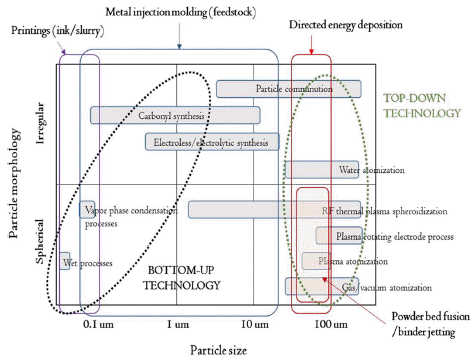
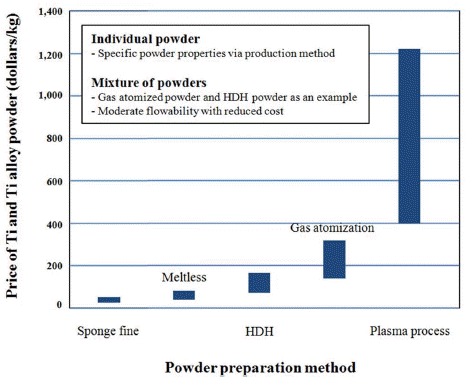


Fig. 1
Fig. 2
Fig. 3
Fig. 4
Fig. 5
Fig. 6
Fig. 7
| Standardgroup | Characteristics | Materials | ||||
|---|---|---|---|---|---|---|
| Materials | Consolidation mechanism | Polymer | Metal | Ceramic | Composite | |
| Binder jetting | Powders Binders | Polymerization | O | O | O | O |
| Directed energy deposition | Powders Wires | Melting-solidification | O | O | O | O |
| Material extrusion | Wires | Extrusion-polymerization | O | O | O | O |
| Material jetting | Photopolymer Wax | Photopolymerization | O | O | O | |
| Powder bed fusion | Powders | Melting-solidification | O | O | O | O |
| Solid/liquid phase sintering | ||||||
| Sheet lamination | Sheets Wires | Bonding Joining/welding | O | O | O | |
| Vat Photo-polymerization | Photo-polymers | Photopolymerization | O | O | O | |
| Divisionc | Polymers | Metals | Ceramics | Composites |
|---|---|---|---|---|
| AM materials | Thermoplastics Thermosets Photopolymers Elastomers |
Powders Wires Sheets |
Structural ceramics Functional ceramics Bio-ceramics |
PMC MMC CMC |
| ASTM classification | Commercialized process (Maker) | Process time |
Properties | ||
|---|---|---|---|---|---|
| Relative density (%) | Accuracy (mm) | Surface roughness (Ra/um) | |||
| Binder jetting | Digital part materialization (ExOne) | 10 hours |
> 95 |
~ +/- 2.0 | ~ 9 |
| Powder bed fusion | Electron beam melting (Arcam AB) | 12 hours | > 99 | ~ +/- 0.2 | ~ 20 |
| Directed metal laser sintering (EOS) | Laser engineered net shaping (Optomec) | 24 hours | > 99 | ~ +/- 0.05 | ~ 9 |
| Directed energy deposition | Ultrasonic additive manufacturing | 10 hours | > 99 | ~ +/- 0.125 | ~ 25 |
| Sheet lamination | (Fabrisonic LLC) | 24 hours | > 99 | ~+/- 0.015 | ~ 7 |
| Applications | Metal powders | Powder suppliers |
|---|---|---|
| Medical devices Aerospace components Molds Automotives Energy Custom/jewelry Others |
Pure Ti/Ti-6Al-4V Co alloys (CoCr, CoCrMo) Al alloys (AlSi, AlSiMg, AlMgSc, 7XXX) Ni alloys (IN 625, IN 718) Fe alloys (316L STS, Maraging, 17-4 PH) |
LPW Technology Ltd Sandvik Materials Technology H ganas AB Carpenter Technology Corp. Allegheny Technologies Incorporated H.S. Starck Additive Metal Alloys Advanced Powders & coatings CSIRO Nanosteel Cooksongold |
| Powder production process | Morphology | Size (median/um) | Impurities | Reference | |
|---|---|---|---|---|---|
| O | C | ||||
| Kroll (sponge fine) | Irregular/facet | 180-800 | 0.35 | 0.05 | 66 |
| Hunter (sponge fine) | Irregular/facet | 180-800 | 0.35 | 0.05 | 67 |
| FFC Cambridge (crushed powder) | Irregular/facet | 0.40 | 68 | ||
| HDH powder | Irregular/facet | 38 | 0.25 | 0.04 | 66 |
| Gas atomization | Spherical | 32 | 0.15 | 0.03 | 69 |
| Plasma rotating electrode process | Spherical | 130 | 0.15 | 0.02 | 70 |
| Plasma atomization | Spherical | 60 | 0.15 | 0.04 | 71 |
| Powder | Process | Shape | D50, μm | Distribution | Flow time, S | Cost |
|---|---|---|---|---|---|---|
| Al | gas atomized | spherical | 30 | moderate | nf | moderate |
| Co alloy | gas atomized | spherical | 90 | - | ||
| Fe | gas atomized | spherical | 66 | 9 | ||
| stainless | gas atomized | spherical | 12 | 3.8 | ||
| TiAl | gas atomized | spherical | 180 | 30 | ||
| Cu | water atomized | nodular | 62 | wide | 48 | low |
| Fe | water atomized | irregular | 75 | 26 | ||
| Pb | water atomized | ligamental | 42 | 24 | ||
| stainless | water atomized | irregular | 60 | 2.6 | ||
| tool steel | water atomized | nodular | 70 | 50 | ||
| Fe | Centrifugal | spherical | 75 | moderate | 14 | high |
| Ti alloy | Centrifugal | spherical | 175 | 28 | ||
| Division | Unit | Selective laser melting | Electron beam melting | Laser metal deposition | Selective laser sintering |
|---|---|---|---|---|---|
| Equipment | SLM 280HL (SLM Solutions) | Arcam A2 (Arcam) | Trumpf HLD 3504 (Trumpf) | EOSINT M270 (EOS) | |
| Build volume | mm3 | 280×280×350 | 250×250×400 | 250×250×215 | |
| Beam size, in general | um | ~120 | ~500 | ~4100 | ~500 |
| Scanning speed in general | mm/s | ~800 | ~800 | ~40 | ~100 |
| Atmosphere | Inert gas | Vacuum | Ar shielding gas | Inert environment | |
| Layer thickness | um | ~75 | ~100 | ~400 | ~100 |
| Feedstock | um | Powder (~50) | Powder (~150) | Powder (~200) | Powder (~74) |
| ASTM group | Powder bed fusion | Directed energy deposition | Powder bed fusion | ||
| Powder | Powder preparation | AM process | Ref. |
|---|---|---|---|
| Fe-C (graphite) | Tumbling mixing (0, 0.4, 0.8, 1.2, 1.6 wt.% C) | Selective laser sintering | 72 |
| WC-Co | Granulation (4, 10 wt.% Co) | Selective laser sintering Bronze infiltration | 73 |
| Invar 36 (Fe-Ni)-TiC | Blended powder (30, 60, 80 wt.% TiC) | Direct metal laser sintering | 74 |
| AA6061-Mg-Sn-Nylon | Blended powder (2 wt.% Mg, 1 wt.% Sn, 3 wt.% nylon) | Selective laser sintering AA6061 infiltration | 75 |
| Cu-Ti-C-Ni | Mixture (planetary ball milling) | Selective laser sintering In-situ carburization | 76 |
| Invar 36-TiC | Powder mixture (0, 6.6, 14.3, 22.1, 29.4, 52.1 vol.% TiC) | Direct laser deposition | 77 |
| Fe-Nylon | Filament (30, 40 vol.% Fe) | Fused deposition modeling | 78 |
| IN 625-TiC | Planetary ball mixing (5 wt.% TiC) | Laser metal deposition | 79 |
| IN 625-Al2O3 IN 625-SiC IM 625-TiC |
Ball mixing (5 wt.% additives) | Laser powder bed fusion | 80 |
| AlSi10Mg-TiC | Ball mixing (5 wt.% TiC nanoparticle) | Selective laser melting | 81 |
| Fe-Ti-C | Ball mixing (24.9 wt.% Ti, 5.1 wt.% C) | Laser additive manufacturing (directed energy deposition) | 82 |
Process time: time generally required for making 125×125×125 mm3 cube product Time for primitive product by binder jetting AM excluding post-processing (debinding and sintering) Relative density after sintering
nf: Non-flow
Table 1.
Table 2.
Table 3.
Table 4.
Table 5.
Table 6.
Table 7.
Table 8.
TOP
 KPMI
KPMI


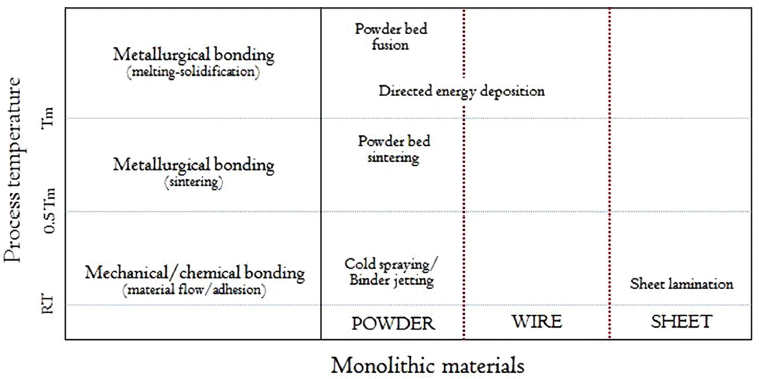



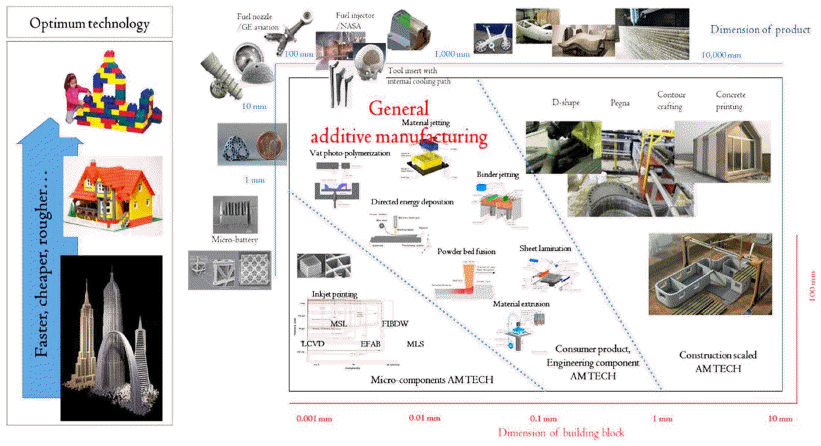
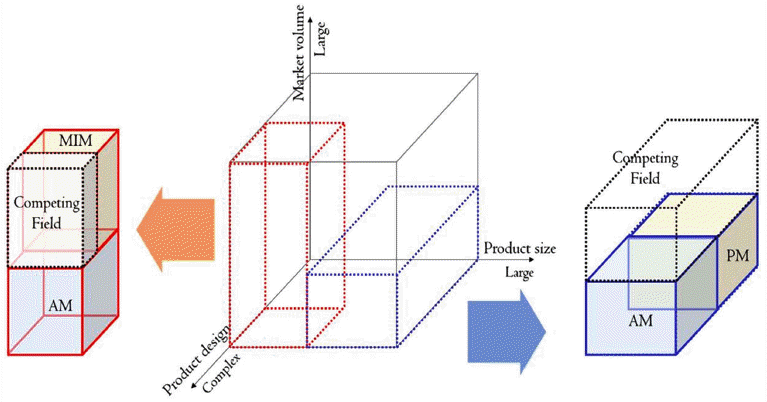
 Cite this Article
Cite this Article







